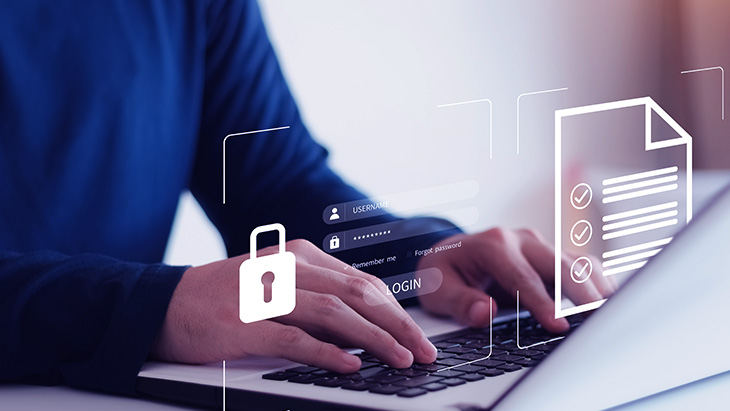
Why is Access Control Important?
Today, when digital transformation has become a part of daily life and the business world, the degree of damage caused by cyber threats is increasing day by day. As cyber attackers resort to new ways of creating data breaches and gaining full control over sensitive data, there are a number of precautions that organizations must take. So how do cyber attackers carry out these breach attempts, which IT infrastructure components are targeted the most?
Data breaches that create access security problems mostly occur as a result of human error and the capture of privileged account information as a result of both internal and external interventions. These leaks, which cover the breach of data security protocols, make it easier for cyber attackers to gain access to critical systems, company databases, and sensitive data. That is why organizations need to have an advanced access control system.
Why is Access Control Important?
Access control is extremely important in terms of information, data, and network security. Access control, which is a part of all the components within the IT infrastructure, minimizes the risk of cyber attacks that may arise from unauthorized access to devices and servers. The main purpose of access control, which allows you to regulate and control the persons who can view or use any data within the network, is to keep critical data safe.
In addition, access control has implications regarding legal compliance regulations, depending on the nature of your organization, such as:
- PCI DSS: Article 9 of this data security standard limits physical access within the organization and requires organizations to have to have adequate access controls against cyber attackers in order to reduce the risk of cybersecurity. Article 10, on the other hand, requires organizations to have an advanced auditing system to monitor their IT infrastructure.
- HIPAA: Its purpose is to prevent the disclosure of health data of organizations and their stakeholders. It aims to limit physical and electronic access.
- SOC 2: Addresses the audit regulations aimed at protecting third parties, service providers, and customers from data breaches. The SOC 2 protocol, important for companies handling sensitive personal data, requires the use of an access control system with two-factor authentication and data encryption.
- ISO 27001: It is a protocol developed to ensure data security in a sustainable way, and to eliminate problems that may cause disruption of the workflow. It helps control cyber threats and vulnerabilities.
What Are the Components of Access Control?
Physical and logical access control has five key components that limit access to critical data for your organization:
- Authentication: Helps authenticate a person, a computer user, or a computer system. This component includes such things as verification of credentials, verification of a website's digital certificates, and validation of login credentials.
- Authorization: This component allows control of the right to access the resources and procedures related to authorized access. Thanks to the authorization process, you can define privileged accounts in your network and provide high-level control in various areas, especially including access to databases.
- Access: Involves user access to relevant resources after authentication of identity and privileged account access.
- Administration: Helps perform extensive management of an access control system. It includes adding and removing privileged accounts, as well as making it possible to control the access of database administrators to critical databases.
- Control: It is related to the application of the Least Privilege principle. It is a part of the logical access control process. Thanks to the regular inspection mechanism, users are prevented from undertaking tasks for which they are not authorized during the process. The cyber security risk is thus minimized.
How Access Control Works?
Access control can be discussed under two main headings in terms of providing physical security and cybersecurity:
- Physical access control: It involves limiting the access to your organization's physical assets. The use of security cards to enter areas such as buildings, campuses, cafeterias, and laboratories is an example of physical access control.
- Logical access control: Limits access to computers, servers, files, and various critical data in your organization's IT infrastructure. In addition to the usernames and passwords set for privileged account access, the application of OTP (One-Time Password) is also included in the logical access control elements.
An organization should use both physical and logical access control simultaneously. Physical access control enables the control of the buildings and the areas employees have access to and the duration of their use of these areas, while logical access control enables controlling the movements within the network, the access to critical data areas, and the logins to privileged accounts.
It is worth emphasizing that biometric data plays an important role in operational terms in access control systems. In these systems, verification can be done by requesting biometric data from the user. In addition, the user may be asked to enter a password or a personal identification number. On the other hand, two-factor authentication also plays an important role in the operation of access control systems. In these systems, a user's data is integrated with an OTP sent to the smartphone. For privileged access, the user is asked to simultaneously verify both his own data (for example, biometric data) and a short-term security code. Access is granted only after both steps of the verification process are completed.
Optimal Solution for Logical Access Control: PAM
Privileged Access Management solutions enable you to efficiently manage privileged accounts, authorized access, passwords, usernames, critical data, and digital business processes that need to be audited in the logical access management process. Privileged Access Management (PAM) systems offer the ability to do 24/7 monitoring and intervene when needed and are of critical importance in the protection of privileged accounts, which is extremely important in terms of data and access security.
Single Connect, our Privileged Access Management solution, fully meets the needs of organizations in terms of logical access control, thanks to the modules it incorporates.
The Privileged Session Manager module of Single Connect allows you to control all privileged sessions on the network. Two-Factor Authentication, on the other hand, requires simultaneous verification of location and time from users who request privileged access. Users who cannot verify location and time simultaneously are not granted access. The Database Access Manager allows you to control the administrator movements on critical databases, while Dynamic Data Masking allows you to mask all data on the network. Finally, Privileged Task Automation increases the efficiency of workflows by automating routine tasks. Thus, the business becomes more sustainable.
If you want to ensure access control by using a PAM solution and to introduce the best end-to-end protection from unauthorized access to the critical data in your IT infrastructure, you can benefit from Single Connect, one of the world's most comprehensive PAM solutions; and you can take advantage of the superior features of Single Connect, an access control system that plays an important role in minimizing cybersecurity threats and ensures 24/7 control over privileged access.
Contact us to get more detailed information about Single Connect and discuss Privileged Access Management with our team of experts.











